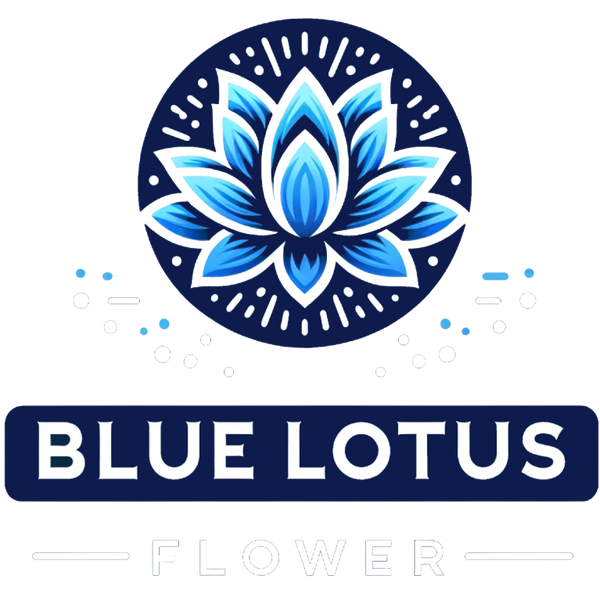Ancient Egyptian Use of Blue Lotus
Introduction
The blue lotus flower, Nymphaea caerulea, holds a special place in the history and culture of ancient Egypt. This aquatic plant was not only admired for its beauty but also revered for its profound symbolic and practical roles. From religious ceremonies to daily life, the blue lotus was deeply intertwined with the beliefs and practices of ancient Egyptians.
Botanical Profile of the Blue Lotus Flower
The blue lotus is a water lily that thrives in the warm, shallow waters of Egypt. Scientifically known as Nymphaea caerulea, it features striking blue petals and a yellow center. The flower opens during the day and closes at night, a characteristic that contributed to its symbolic significance.
Historical Context
In ancient Egypt, plants and flowers were not merely decorative; they were imbued with deep symbolic meanings. The blue lotus, in particular, was considered a powerful symbol of creation, rebirth, and the divine. It was commonly depicted in art and included in a variety of rituals and ceremonies.
Religious Significance
The blue lotus was closely associated with several deities, particularly the sun god Ra. It symbolized the sun's daily cycle, mirroring the flower's behavior of opening at sunrise and closing at sunset. In Egyptian mythology, the blue lotus was believed to emerge from the primordial waters at the beginning of time, making it a symbol of creation and regeneration.
Ritualistic Uses
The blue lotus played a crucial role in various religious and ceremonial contexts. It was often included in offerings to the gods and used in rituals intended to promote health and spiritual purity. The flower was also a common motif in funerary practices, symbolizing the deceased's journey to the afterlife and their hoped-for rebirth.
Medicinal Applications
Ancient Egyptian texts and artifacts suggest that the blue lotus was used for its medicinal properties. It was believed to have calming and psychoactive effects, making it a valuable component in treatments for anxiety and insomnia. Preparations of blue lotus, such as teas and tinctures, were used to treat a variety of ailments, reflecting the Egyptians' sophisticated understanding of its benefits.
Symbolism of Rebirth and Creation
The blue lotus was a potent symbol of rebirth and creation, deeply connected to the sun god Ra. It represented the cycle of life, death, and rebirth, echoing the natural rhythms of the Nile and the daily journey of the sun across the sky. In creation myths, the blue lotus was depicted as the birthplace of the sun, emerging from the chaotic waters to bring forth light and life.
Artistic Depictions
The blue lotus is frequently depicted in ancient Egyptian art, found in tomb paintings, carvings, and sculptures. It often appears in scenes of feasting and offering, as well as in the hands of gods and pharaohs. The flower's depiction in art reinforced its symbolic meanings and demonstrated its importance in Egyptian culture.
Cultural Representations
Beyond its religious and symbolic roles, the blue lotus was embedded in the everyday culture of ancient Egypt. It appeared in literature, both in poetry and prose, symbolizing beauty, purity, and transcendence. The flower was also used in idiomatic expressions and proverbs, reflecting its deep cultural resonance.
Archaeological Evidence
Archaeological discoveries have provided a wealth of evidence about the use of blue lotus in ancient Egypt. Remnants of the flower have been found in tombs, indicating its use in burial practices. Artifacts such as jewelry, amulets, and pottery adorned with blue lotus motifs further underscore its significance.
Conclusion
The blue lotus flower was a central element of ancient Egyptian culture, symbolizing creation, rebirth, and the divine. Its roles in religious rituals, medicinal practices, and artistic representations highlight its multifaceted significance. The legacy of the blue lotus continues to be appreciated today, offering a glimpse into the spiritual and cultural life of one of history's most fascinating civilizations.
FAQs
What did the blue lotus symbolize in ancient Egypt? The blue lotus symbolized creation, rebirth, and the divine, closely associated with the sun god Ra and the daily cycle of the sun.
How was the blue lotus used in religious rituals? The blue lotus was included in offerings to the gods, used in health and purification rituals, and featured in funerary practices to symbolize the deceased's journey to the afterlife.
Did the ancient Egyptians use the blue lotus for medicinal purposes? Yes, the blue lotus was used for its calming and psychoactive effects, often in teas and tinctures to treat anxiety, insomnia, and other ailments.
How was the blue lotus depicted in ancient Egyptian art? The blue lotus appeared in tomb paintings, carvings, and sculptures, often in scenes of offering, feasting, and in the hands of gods and pharaohs.
What archaeological evidence supports the use of blue lotus in ancient Egypt? Archaeological finds include remnants of blue lotus in tombs and artifacts adorned with blue lotus motifs, such as jewelry, amulets, and pottery.
Why is the blue lotus important in the study of ancient Egyptian culture? The blue lotus offers insights into the spiritual, medicinal, and cultural practices of ancient Egyptians, highlighting their beliefs in creation, rebirth, and the divine.

